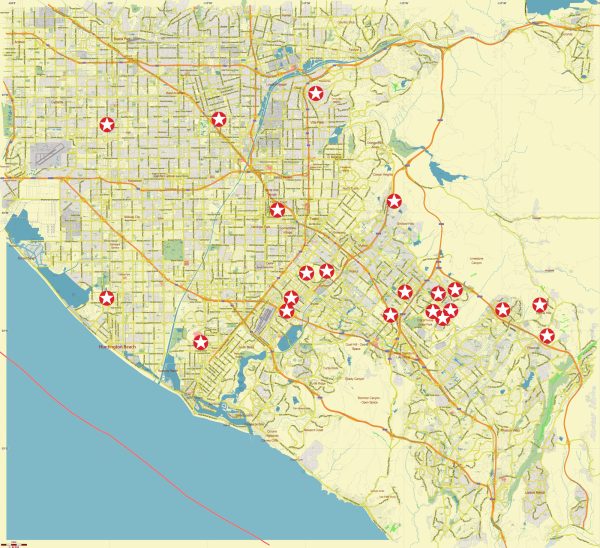The history of urban development in the southeastern region of Los Angeles, particularly in Orange County, California, is characterized by a dynamic interplay of factors such as population growth, economic changes, and cultural shifts. The development of this area can be traced through several keys:
- Native American Presence: Before European colonization, the region was inhabited by Native American communities, including the Tongva people. Their presence and influence can still be seen in the local geography and some place names.
- Spanish and Mexican Eras: The area became part of the Spanish mission system in the 18th century. After Mexico gained independence from Spain in 1821, the land was divided into ranchos, and many of the early land grants in Orange County were given during this period.
- American Pioneers and Agricultural Expansion: The mid-19th century saw an influx of American pioneers and settlers. The discovery of gold in California in 1848 brought a significant increase in population. Agriculture became a vital industry, with citrus orchards and other crops dominating the landscape.
- Railroad Development: The arrival of the Southern Pacific Railroad in the late 19th century facilitated transportation and trade, contributing to the region’s economic growth. Towns and communities began to develop around railroad stations.
- Oil Boom: In the early 20th century, the discovery of oil in the area brought about an economic boom. Cities like Huntington Beach and Santa Ana experienced significant growth as a result of the oil industry.
- Post-World War II Suburbanization: After World War II, the region experienced a population boom and a shift toward suburban development. The GI Bill and increased automobile ownership played a role in the growth of suburban communities. Orange County, once primarily agricultural, transformed into a suburban landscape with residential developments and shopping centers.
- Aerospace and Technology Influence: The mid-20th century also saw the emergence of the aerospace industry in Southern California, with companies like McDonnell Douglas and Rockwell International playing a significant role. The region later became a hub for technology and innovation.
- Cultural and Entertainment Centers: Cities like Anaheim gained prominence with the opening of Disneyland in 1955. The entertainment industry, including the development of theme parks and the Anaheim Convention Center, contributed to the economic and cultural landscape.
- Diversity and Demographic Changes: Orange County has undergone significant demographic changes, with an increasing population and growing diversity. The area has become a melting pot of cultures and backgrounds.
- Contemporary Urban Challenges: In recent years, the region has faced challenges related to urban sprawl, traffic congestion, and environmental concerns. Efforts have been made to address these issues through urban planning, public transportation initiatives, and sustainable development practices.
The history of urban development in the Los Angeles South-East (Orange County) area reflects the broader trends in Southern California, from its agricultural roots and suburban expansion to its role as a center for industry, technology, and diverse cultural influences.


 Author: Kirill Shrayber, Ph.D.
Author: Kirill Shrayber, Ph.D.